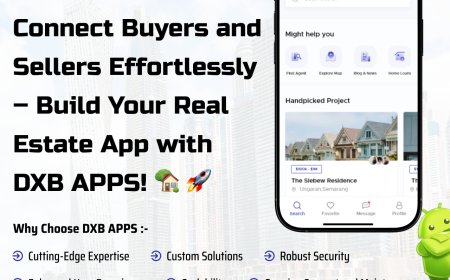Social Impact Software as a Catalyst for Collective Change in the Digital Age
Social Impact Software as a Catalyst for Collective Change in the Digital Age

In an increasingly interconnected world where every action echoes across communities and platforms, social impact software has emerged as a transformative force in orchestrating collaboration, transparency, and measurable change. Unlike conventional digital tools that merely assist with task management or communication, social impact platforms are engineered to facilitate deeper engagement, community-driven strategies, and real-time tracking of goals in social change ecosystems. As the world pivots toward impact-focused models, this innovative software is rapidly redefining how nonprofits, grassroots networks, and impact-driven enterprises operate, organize, and thrive.
The Evolution of Collaboration in Purpose-Driven Networks
Over the last decade, collaborative work has shifted from simple file-sharing and messaging to integrated, strategic ecosystems. The unique demands of social impact workcross-sector alliances, community stakeholder input, and outcome-oriented accountabilityrequire tools built specifically for these environments. Thats where social impact software comes in. It goes beyond conventional platforms by providing purpose-aligned frameworks that support self-organizing teams, decentralized governance, and collective intelligence.
Solutions like these help organizations break free from hierarchical silos and cultivate shared ownership. Through intuitive dashboards, aligned goals, and flexible team structures, software designed for social impact ensures every contributor knows how their work supports broader initiatives. This, in turn, builds resilience and transparency across mission-critical efforts.
Redefining Stakeholder Engagement and Visibility
Engaging with stakeholders is no longer a once-a-year survey or quarterly meeting. Modern impact organizations require a fluid, ongoing connection with their internal and external communities. Social impact software enables this by offering real-time collaboration tools that make every voice countfrom core team members to volunteers, funders, and community leaders.
These platforms are built to foster inclusion. They allow contributors to join working groups aligned with their interests and expertise, facilitate multilingual interactions, and provide equal access to planning documents, updates, and feedback loops. As a result, stakeholder engagement becomes a living, breathing process that informs every layer of decision-making and execution.
Streamlining Governance and Decision-Making Processes
One of the often-overlooked challenges in mission-based organizations is managing governance while maintaining agility. Traditional structures can hinder innovation and responsiveness, especially when groups grow in size or geographic scope. Social impact software addresses this friction by introducing modular governance models that adapt to an organizations size, structure, and culture.
With integrated voting systems, role-based permissions, and dynamic working groups, these platforms streamline decision-making without sacrificing transparency. Teams can co-create policies, ratify decisions in real-time, and track implementation across networks. This ensures that power is decentralized, and leadership is shareda hallmark of resilient and equitable social systems.
Transparency Through Data: Mapping Progress and Measuring Impact
Accountability is essential in any organization, but it becomes even more critical in social change efforts where public trust, donor confidence, and community credibility are paramount. Social impact software integrates data tracking and reporting capabilities that bring unparalleled transparency to every initiative.
Rather than relying on disjointed spreadsheets or complex CRMs, impact platforms offer centralized dashboards that visualize progress toward shared goals. Metrics can be customized to align with specific impact frameworks such as the UN SDGs or Theory of Change models, offering both macro and micro views of organizational performance. These tools ensure that everyonefrom executives to field volunteerscan access and interpret the data they need to steer their efforts effectively.
Amplifying Collective Intelligence Through Networked Communication
The heart of social change lies in the collective wisdom of its community. Social impact software fuels this by offering smart communication features that move beyond one-way announcements or static forums. Advanced platforms enable threaded discussions tied to projects, cross-functional channels for idea-sharing, and curated content feeds based on each users involvement.
This kind of networked communication empowers every member to contribute ideas, flag issues, or share opportunities. It also helps preserve organizational knowledge and builds momentum by connecting initiatives across departments or partner organizations. In this way, the software becomes not just a toolbut a shared brain that scales with the mission.
Simplifying Onboarding and Participation for Decentralized Teams
Whether you're onboarding a new volunteer, inviting a strategic partner, or engaging a community organizer, the complexity of integrating new contributors can slow progress. Social impact software makes onboarding intuitive and mission-aligned. By offering guided introductions, contextual project overviews, and immediate access to relevant resources, the platform ensures contributors can start making a difference from day one.
Moreover, decentralized teams often face logistical challenges due to different time zones, communication preferences, and working styles. The software accommodates this by offering asynchronous collaboration tools, mobile-first access, and customizable notifications that keep teams informed without overwhelming them. This lowers the barrier to participation and nurtures long-term commitment across diverse user bases.
Designing for Diversity, Equity, and Inclusion at Every Level
At the core of social innovation is the principle of inclusivity. Any meaningful digital tool must be grounded in equity, both in functionality and philosophy. Social impact software is uniquely equipped to reflect these values. From customizable privacy settings and consent-driven data policies to collaborative spaces designed with neurodiversity and accessibility in mind, these platforms prioritize human-centered design.
They allow marginalized voices to be amplified, not obscured, and foster environments where power dynamics can be openly discussed and restructured. For example, contributors can choose how they engagewith options ranging from anonymous feedback forms to public facilitation rolesensuring that everyone participates in the way they feel most empowered.
Real-World Application: Transforming Impact Across Sectors
Social impact software is already making waves across sectors. Nonprofits use it to coordinate large-scale volunteer initiatives. Philanthropic networks apply it to align funding with real-time needs. Community development groups use it to map local assets and identify emerging challenges. Even municipal governments are experimenting with these platforms to improve civic engagement and policy co-creation.
The adaptability of the software is what makes it so revolutionary. Whether you're running a hyper-local food justice initiative or managing a multi-national climate coalition, the platform molds itself to your needswithout compromising on collaboration, equity, or accountability.
The Future Is Networked, Not Hierarchical
As we move deeper into the 21st century, the need for coordinated, values-driven collaboration has never been clearer. Crises such as climate change, systemic inequality, and public health emergencies require multi-dimensional approaches that are impossible to execute in silos. Social impact software represents a leap forward in how we organize ourselves for this work.
By embracing a networked approach, organizations can scale their impact without scaling bureaucracy. They can act quickly, learn continuously, and remain rooted in community-led strategies. Ultimately, these platforms are not just about optimizing workflowsthey are about reimagining how we build a better world together.
Conclusion: Embracing the Digital Infrastructure of Change
In conclusion, social impact software isnt just a productits a paradigm shift. It aligns technology with purpose and places collaboration, accountability, and equity at the forefront of every mission. Whether you're a grassroots changemaker or a global impact strategist, now is the time to embrace the digital tools that support the social ecosystems of tomorrow.
Explore how this transformative platform can power your next impact initiative by visiting Social Impact Software. It's more than a toolit's a movement.










































